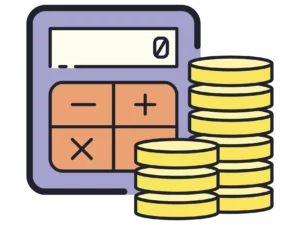
TABLE OF CONTENTS
- What Is the Imprest System?
- How Does Imprest Work?
- Features of the Imprest System
- What Is a Petty Cash Fund?
- Petty Cash Expenditure Documentation With an Imprest System
- How to Reconcile Your Imprest Petty Cash Fund
- Benefits of Using an Imprest Account for Petty Cash
- Disadvantages of an Imprest Account for Petty Cash
- The Future of Imprest Accounts
- Key Terms Related to Imprest Systems
- Final Thoughts on Imprest Systems

Imprest accounts are a convenient way to make small business-related purchases without the hassle of completing a formal purchase order. By designating an account for these expenses, you’ll be able to withdraw funds from the said account without impacting other business funds.
If you’re looking for a way to streamline your business expenses, an imprest account may be the way to go. Follow along as we explain how the imprest system works, what an imprest account is, and how they relate to petty cash.
What Is the Imprest System?
The imprest system tracks small disbursements of cash for approved, incidental expenses. At pre-determined intervals—such as annually, monthly, or weekly—or when the account is low, businesses replenish their imprest account up to the approved amount using the business’s primary capital.
Continually reconciled, imprest accounts track business expenses and those responsible for said expenses. The system itself is simple, and perhaps better expressed as a formula:
Total Amount of Imprest on Hand + Total Amount of Receipts Submitted = Total Authorized Imprest
Note: If both sides of this equation are not equal, an audit may be required.
How Does Imprest Work?
An imprest account holds “imprest,” or funds set aside for the purpose of paying for small transactions, reimbursements, and incidental purchases. A standing imprest account maintains a fixed balance replenished after a certain amount of expenses are paid or at pre-determined intervals based on a sufficient pattern of spending. On the other hand, a special advance imprest is for a very particular reason and/or expenses.
As a rule, imprest accounts require consistent monitoring. This makes it easier to catch errors, cap spending, and detect the mishandling of cash. Typically, a financial manager oversees the account, disbursing cash or reimbursing employees from the account as needed. Or, at larger corporations, it could be that each department manages its own petty cash via an assigned custodian.
To keep a paper trail of the funds, financial custodians disburse imprest in two ways: direct reimbursement and signed voucher/slip. Direct reimbursement relies on an approved receipt, invoice, document, or stub signed by a supervisor. Meanwhile, a signed voucher records the withdrawal of funds from the imprest account for approved purposes and guarantees the submission of documentation to account for the expenditure.
What Are the Two Classes of Imprest?
Standing Imprest
A standing imprest account is held throughout the financial year and replenished when necessary by the submission of receipts and vouchers.
Special Advance Imprest
A special advance imprest account is used for issuing a cash payment(s) for a specified purpose and by a specific completion date.
Features of the Imprest System
- Separate Accounting: A fixed amount of cash is allocated to a separate business bank account in the general business ledger.
- Documentation: Disbursement receipts are the basis for periodic replenishment of the imprest account.
- Regular Replenishment: After the fund has paid out a certain amount, or at set intervals, the fund is replenished to maintain a fixed balance.
- Consistent Auditing: The responsible body regularly reviews and audits discrepancies between expected and actual cash balances.
What Is a Petty Cash Fund?

Though many use the terms interchangeably, petty cash is a type of imprest. This type of imprest is, quite literally, a small amount of cash kept on hand—usually in a lockbox, drawer, or safe—to pay for incidentals or business expenses, especially when a check or credit card isn’t possible or convenient.
To use petty cash on the spot for situations, like company lunches or office supplies, requires the submission of a receipt. Or, employees can sign a voucher to take out cash. This voucher promises the submission of applicable receipts and any leftover cash by an agreed-upon time.
Because petty cash entries go into a ledger, the expenses are traceable to either a person or an expenditure. This makes it easier to spot discrepancies and flag transactions for investigation.
Petty Cash Expenditure Documentation With an Imprest System
At its core, the imprest system is all about documentation. Withdrawing imprest requires filling out a voucher to log details of the purchase request. Afterward, the proof-of-purchase is cataloged in the appropriate manner and submitted to the petty cash financial custodian. A petty cash voucher should include the following:
- Date of the request
- Amount total
- Reason for the purchase
- “Approved by” signature line
- Supporting documents
How to Reconcile Your Imprest Petty Cash Fund
Companies reconcile imprest accounts when funds are low or at specified intervals. Here’s how:
- Note the current amount in your imprest and/or petty cash fund. Subtract this number from your starting balance. This represents your total amount withdrawn.
- Add up all outstanding petty cash vouchers, and add this amount to any submitted receipts.
- The sum of all your vouchers and receipts should match the total amount withdrawn.
- The amount of cash you have in your lockbox should be equal to the account’s current balance.
- If either doesn’t match, you’ll have to investigate if there’s a typo, missing receipt, or lost cash.
- Submit all documentation, then logged into the general ledger.
- Funds are replenished to the renewal amount approved via a business-issued check.
Once reconciled, you easily spot variances and perform any further investigations if necessary.
Benefits of Using an Imprest Account for Petty Cash
One of the main benefits of using an imprest account for petty cash is added transparency as to where your cash is going. This system requires approval for the spending of business funds, making it difficult to deplete the account fully. And there’s little room for the mishandling of funds, as everyone who touches cash signs for the money and is accountable for its use.
Disadvantages of an Imprest Account for Petty Cash
While an imprest system offers a high level of control, it’s arguably inefficient when you consider the amount of paperwork involved relative to transaction size. Not to mention, the imprest system is only as good as the financial custodian overseeing it. If there are mistakes in recording disbursements, the system quickly falls apart. In fact, when cash disappears from a business—whether because of mismanagement, employee theft, or overspending—the imprest account is often where the investigation into this occurrence begins.
Finally, and perhaps most notably: The mechanics of the imprest system have all but disappeared. These days, sign-out forms, purchase orders, and expense tracking have become largely digital. Employee credit cards have eliminated the need for petty cash. Yet the fundamentals of imprest—tracking who spends business funds and the documentation supporting such—carry on in business today.
The Future of Imprest Accounts
The cultural adoption of electronic payment systems has made the requirement of manual tracking expenses obsolete. Many businesses now opt for simpler solutions—such as employee credit cards or having employees apply for expenses through a more streamlined system. In other words, many businesses now realize that enforcing a slow, clunky paper trail in an ever-more digital workforce is useless and inefficient. Therefore, though the principles of the imprest system are important to understand, using the system, at least in a manual form, has largely fallen out of use.
Key Terms Related to Imprest Systems
“Imprest” comes from the medieval Latin “imprestare,” which means “to lend.” Today, the word lives on with several specific usages. First, it refers to a small advance of funds used for cash expenses, replenished after each use. Secondly, “imprest” can refer to a small cash advance given to a person for a specific purpose. Or thirdly, an imprest can refer to payment made on behalf of a government in advance of work.
Meanwhile, “vouchers” are a record of cash and/or documentation for small transactions. A voucher could be anything from an actual receipt to other supporting evidence—invoices, bills, stubs, cash-out forms, etc. Additionally, vouchers can be placeholders for cash and/or receipts until the receipt of further documentation.
In common usage, cash-on-hand could simply mean a petty cash fund. However, in business, it could also mean any accessible, liquid business assets available. In comparison, petty cash should be just one type of cash-on-hand, kept separate from other business accounts.
Final Thoughts on Imprest Systems
An imprest system remains a simple, manual way to track small cash payments related to business expenses. While employee credit cards, online bookkeeping, and expense tracking applications have largely replaced the imprest system, much wisdom can still be gathered from the traditional system. And that wisdom doesn’t have to translate into manual labor! By partnering with a merchant services provider, you can integrate your bookkeeping software with your credit card processing—a modern way to keep your balance sheet and business expenses in check!
The Time Is Now
Track your payments and expenses the modern way.
Ready?





